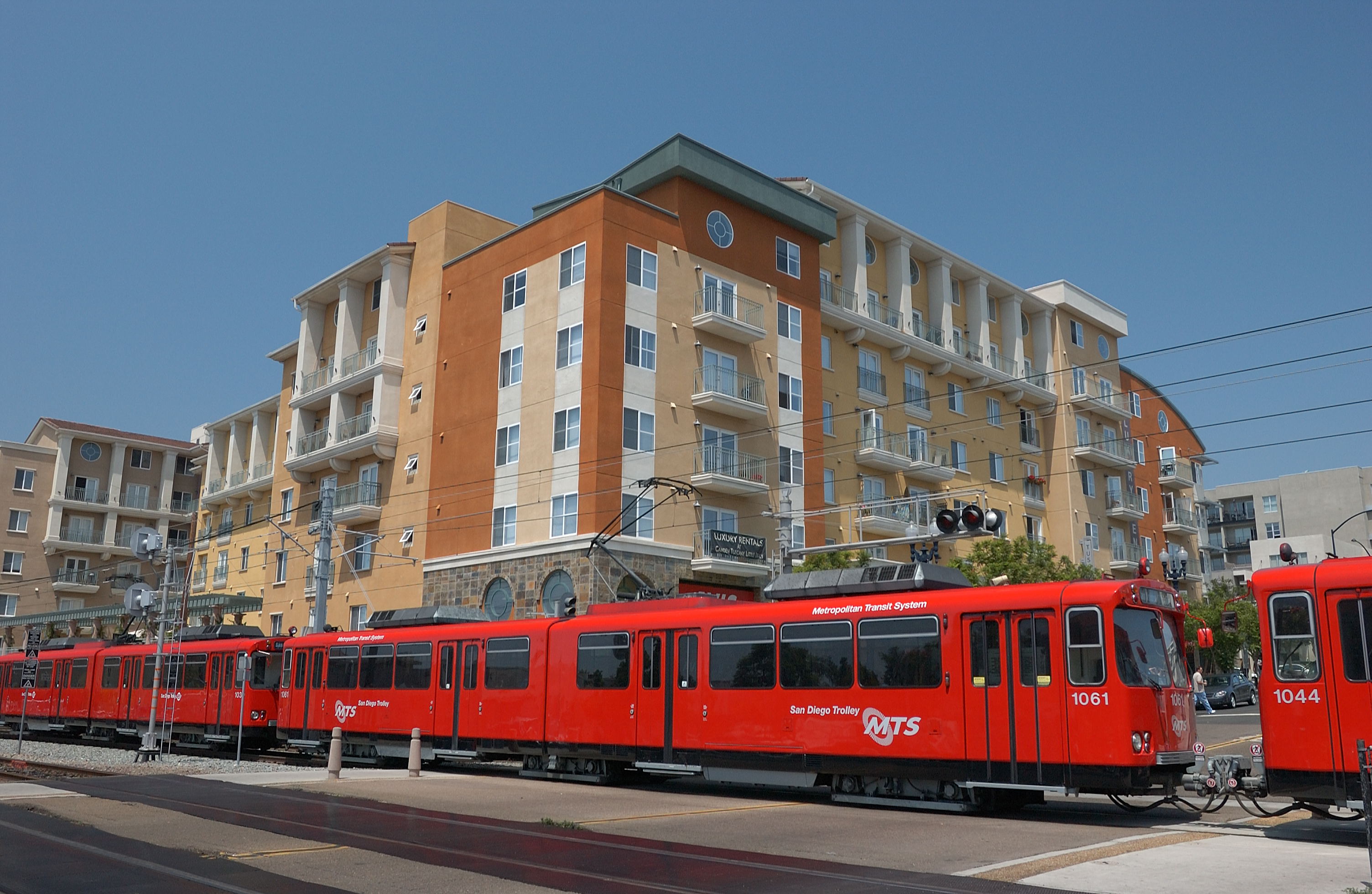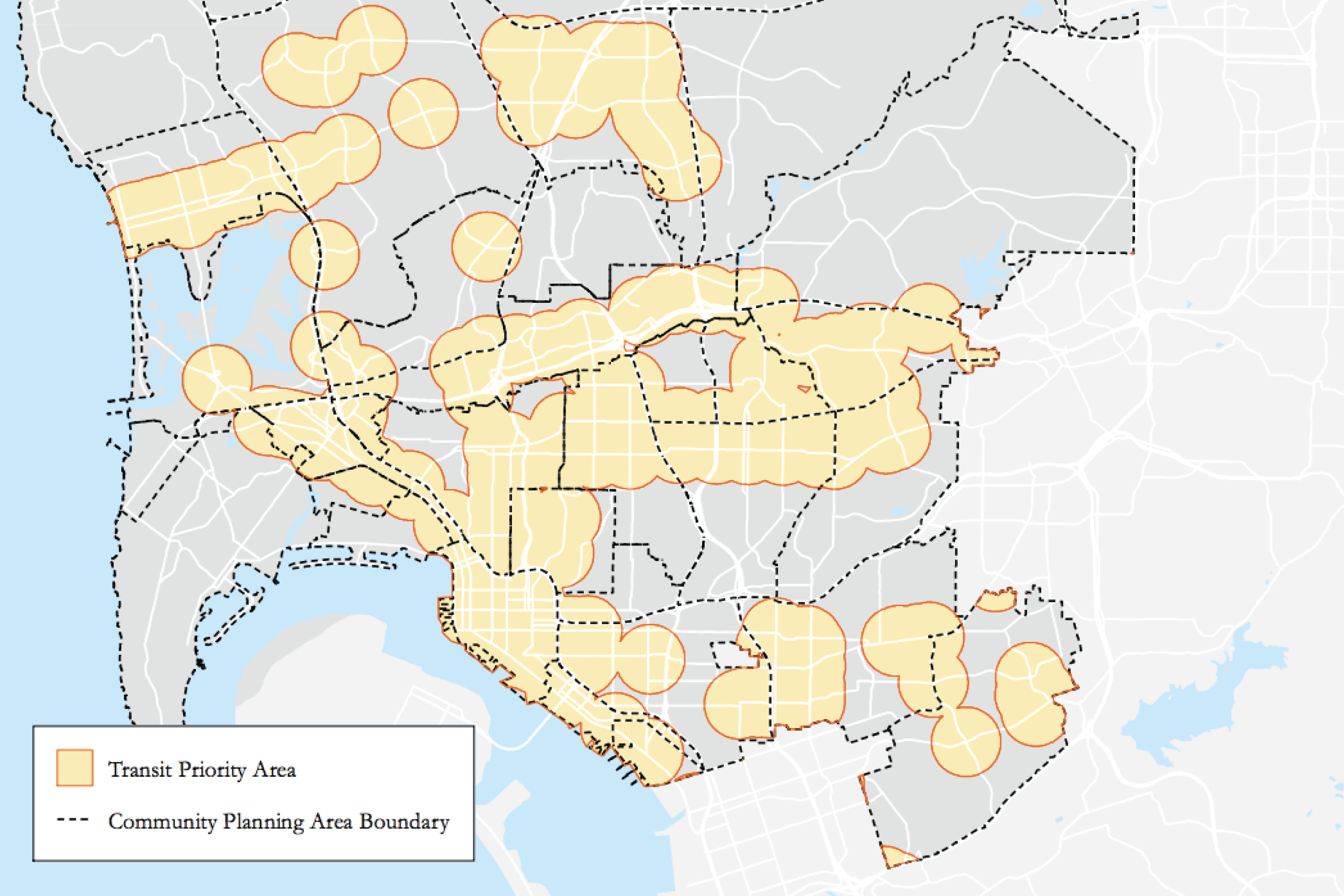
Most US cities require developers to include a certain number of off-street parking spaces when building new housing. Few planning practices do so much harm to cities: Parking mandates induce more driving, increase housing costs, and put climate goals out of reach. Recognizing the damage inflicted by mandatory parking minimums, cities including Minneapolis, Hartford, and Sacramento have recently abolished them entirely or within walking distance of transit stops.
San Diego is the most recent city to substantially reduce its parking mandates. In March, the City Council passed a law eliminating parking requirements downtown and within a half mile of major transit stops citywide. The change will eliminate regulations that added as much as $90,000 to the cost of building one apartment, making it easier to add more affordable homes near transit.
The victory belongs to many players, starting with the advocates at Circulate San Diego. In 2017, Circulate published a Transit-Oriented Development report (with financial support from TransitCenter) that called for abolishing parking minimums downtown and substantially reducing parking minimums near transit.
Circulate’s Director of Policy Maya Rosas says that following the report’s release, the city indicated interest in parking reform, but was slow to act. “We were hearing things like ‘we’re studying parking and we will propose something,’ but it was taking a very long time. We at Circulate didn’t think an additional study was necessary to reduce parking requirements.”
After the report came out, Rosas and Circulate’s Executive Director Colin Parent started regularly attending City Council meetings, even if they weren’t on the topic of parking. “We always found a way to bring up the fact that parking reform needed to happen as soon as possible, and to ask why we were waiting,” says Rosas.
Circulate also engaged city staff directly on the topic, and provided guidance to parking consultants hired by the city about what the reforms should look like. They had law student interns draft legislative language to implement the suggested reforms, then sent that language in letters to the city.
To Circulate’s delight, in November the mayor’s office responded with an ambitious proposal to abolish parking minimums downtown and within designated “Transit Priority Areas,” defined as a half-mile radius of any existing or planned “rail station, ferry terminal served by either bus or rail transit service, or the intersection of two or more major bus routes with morning and afternoon peak hour frequency of 15 minutes or less.”

A selection of San Diego’s “Transit Priority Areas.”
Rosas credits San Diego Mayor Kevin Faulconer for the impressive scope of the reforms, and says his support for the concept was critical.
In subsequent work to build support on the City Council, Circulate encountered measured opposition. “We of course heard complaints that San Diego wasn’t ready, and that we needed good transit before implementing a sweeping policy change like this,” explains Rosas. “But we would counter by saying that the reforms are only proposed where transit exists or will exist within five years.”
Circulate won over skeptics by emphasizing that parking reform would yield more choice in the housing market. “A winning message for us was explaining that housing today in San Diego comes with parking spots,” said Rosas. “If you don’t have or want a car, you can’t own or rent without paying for parking. Eliminating parking requirements provides opportunities for people to live without cars, and to live without being forced to pay for them.”
Circulate also stressed that the majority of housing would still come with parking spaces, and the law isn’t retroactive. Nor does it outlaw parking construction – it merely eliminates the requirement that developers provide parking.
The strategy was effective – the new law passed 8-1 in the City Council.
Circulate sees the reduction of residential parking requirements as a stepping stone to further parking policy reforms and improvements for transit and walking. “We’re so overparked, and we know car ownership will keep going down in the future,” said Rosas. “Moving forward, we expect discussion of eliminating parking requirements in commercial developments, and perhaps even instituting parking maximums in certain circumstances.”
Advocates taking up parking reform need to bring patience and perseverance to the campaign. “It can be a long road, but just because something doesn’t happen right away after a big push doesn’t mean it won’t,” Rosas said. “You should keep bringing it up at any chance.”
And while abolishing parking requirements citywide may be the stronger policy, Rosas recommends advocates begin their campaigns with the politically feasible goal of eliminating parking requirements near transit. “There’s a clear nexus between housing and transit, and in that context it’s easy to get everyone on board who needs to be.”
 On the Brink: Will WMATA’s Progress Be Erased by 2024?
On the Brink: Will WMATA’s Progress Be Erased by 2024?
The experience of being a WMATA rider has substantially improved over the last 18 months, thanks to changes the agency has made like adding off-peak service and simplifying fares. Things are about to get even better with the launch of all-door boarding later this fall, overnight bus service on some lines starting in December, and an ambitious plan to redesign the Metrobus network. But all of this could go away by July 1, 2024.
Read More A Bus Agenda for New York City Mayor Eric Adams
A Bus Agenda for New York City Mayor Eric Adams
To create the “state-of-the-art bus transit system” of his campaign platform, Mayor Adams will have to both expand the quantity and improve the quality of bus lanes. We recommend these strategies to get it done.
Read More